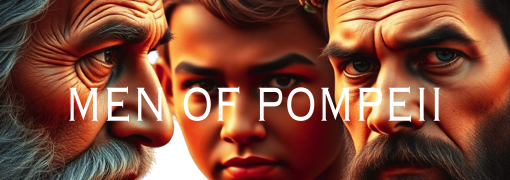The historian’s desk was once cluttered with fragments – broken pottery shards, weathered coins, and yellowed manuscripts with missing pages. For centuries, these incomplete puzzles defined our understanding of ancient Rome’s eastward connections. The Silk Road, that legendary network stretching from the Mediterranean to China, existed in our historical consciousness as a hazy collection of dots, never fully connected. Until now.
Across the sprawling expanse of Eurasia, from Roman ports on the Mediterranean to the markets of Chang’an (modern Xi’an), a complex web of commerce once flourished, carrying not just silk and spices but ideas, technologies, and cultural influences that shaped civilizations. Yet the full extent of Rome’s eastern trade connections remained obscured by time, geography, and the limitations of traditional historical methods.
What if we could see these ancient trade networks in their entirety? What if we could trace the journey of a silver denarius from Rome to a merchant in Palmyra, following its path as it was exchanged for eastern goods that eventually reached the imperial palace? The answers to these questions have remained elusive – until computational approaches began transforming how we study the ancient world.
The Historical Void: What We Didn’t Know About Rome’s Eastern Connections
The conventional narrative of Rome’s eastern trade has been constrained by significant gaps in our knowledge. While historical texts mention diplomatic missions to China and archaeological evidence confirms the presence of Roman goods in Asia, the mechanics of these vast networks – the middlemen, the routes, the volume of trade – remained largely theoretical.
For centuries, historians relied primarily on textual sources like Pliny the Elder, who complained about the Roman Empire’s gold draining to the East in exchange for luxury goods. Archaeological findings added pieces to the puzzle: Roman coins discovered in India, Chinese silk fragments in Palmyra, and pepper pots in Pompeii. Yet these discoveries represented isolated data points rather than a comprehensive picture.
The fundamental challenge was one of scale and complexity. Human minds, even those of brilliant historians, struggle to process the thousands of interconnected variables that would have shaped these ancient trade networks. Geographic barriers, seasonal variations, political changes, price fluctuations, and cultural preferences all influenced how goods moved across continents. Traditional historical methods simply couldn’t integrate all these factors simultaneously.
This is where computational approaches enter the historical stage. The application of artificial intelligence to historical questions isn’t just a new methodology – it represents a fundamental shift in how we can understand the past.
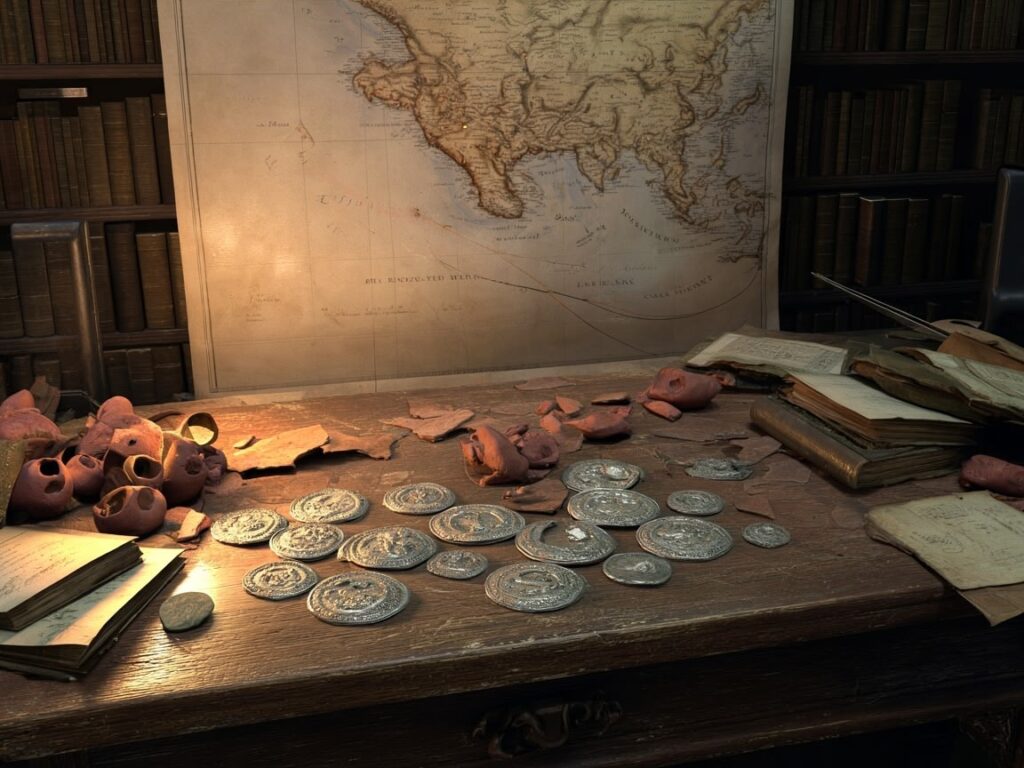
The Digital Archaeologist’s Toolkit: How AI Approaches Historical Mysteries
The reconstruction of Rome’s Silk Road connections began with a deceptively simple question: What if we treated historical data like any other complex system that artificial intelligence is designed to analyze? The challenge resembled other network problems that AI excels at solving – from mapping social media connections to optimizing supply chains.
The process began with data collection on an unprecedented scale. Every relevant ancient source was digitized – not just the well-known texts of Pliny or Strabo, but obscure administrative records, inscriptions, and papyri. Archaeological findings were meticulously cataloged: the location, composition, and dating of every Roman artifact found east of the Mediterranean and every eastern import discovered within Roman territories.
This data was inherently messy, incomplete, and uncertain – exactly the kind of challenge that machine learning systems are designed to handle. The critical innovation came through applying network analysis algorithms originally developed for entirely different purposes. These computational tools excelled at identifying patterns in sparse, noisy data – reconstructing the most probable connections between distant points based on limited evidence.
The resulting computational model didn’t just visualize known trade routes – it began predicting connections that historians hadn’t previously considered. When the algorithm suggested the likelihood of direct maritime trade between Roman Egypt and the Malay Peninsula based on pattern recognition, researchers initially dismissed it as an error. Months later, a reexamination of archaeological reports from southern Thailand revealed previously overlooked Roman glassware in precisely the region the model had indicated.
Breaking Through Methodological Barriers
The true breakthrough came not just from better data processing but from a fundamental shift in approach. Traditional historical methods often focus on definitive evidence – the smoking gun document or artifact that proves a connection. Computational approaches instead work with probabilities and emergent patterns, embracing uncertainty rather than being limited by it.
This probabilistic approach proved especially valuable when examining the role of intermediaries in the Roman-Asian trade network. Historical sources mentioned Parthians, Kushans, and Sogdians as middlemen, but the exact mechanisms of these relationships remained unclear. The AI model identified likely transshipment points and trading hubs based on geographical constraints and the distribution patterns of artifacts.
One particularly valuable insight emerged regarding seasonal variations in trade routes. By incorporating climate data and monsoon patterns into the model, researchers could track how Roman-Eastern trade likely shifted between maritime and overland routes depending on the time of year. This dynamic understanding replaced the static maps that had previously represented the Silk Roads.
The computational approach also revealed something unexpected: resilience. When political conflicts closed certain routes – such as during periods of Roman-Parthian warfare – the model showed how trade likely rerouted through alternative channels rather than ceasing altogether. This adaptive network behavior explained why eastern goods continued flowing into Roman markets even during times of geopolitical tension.
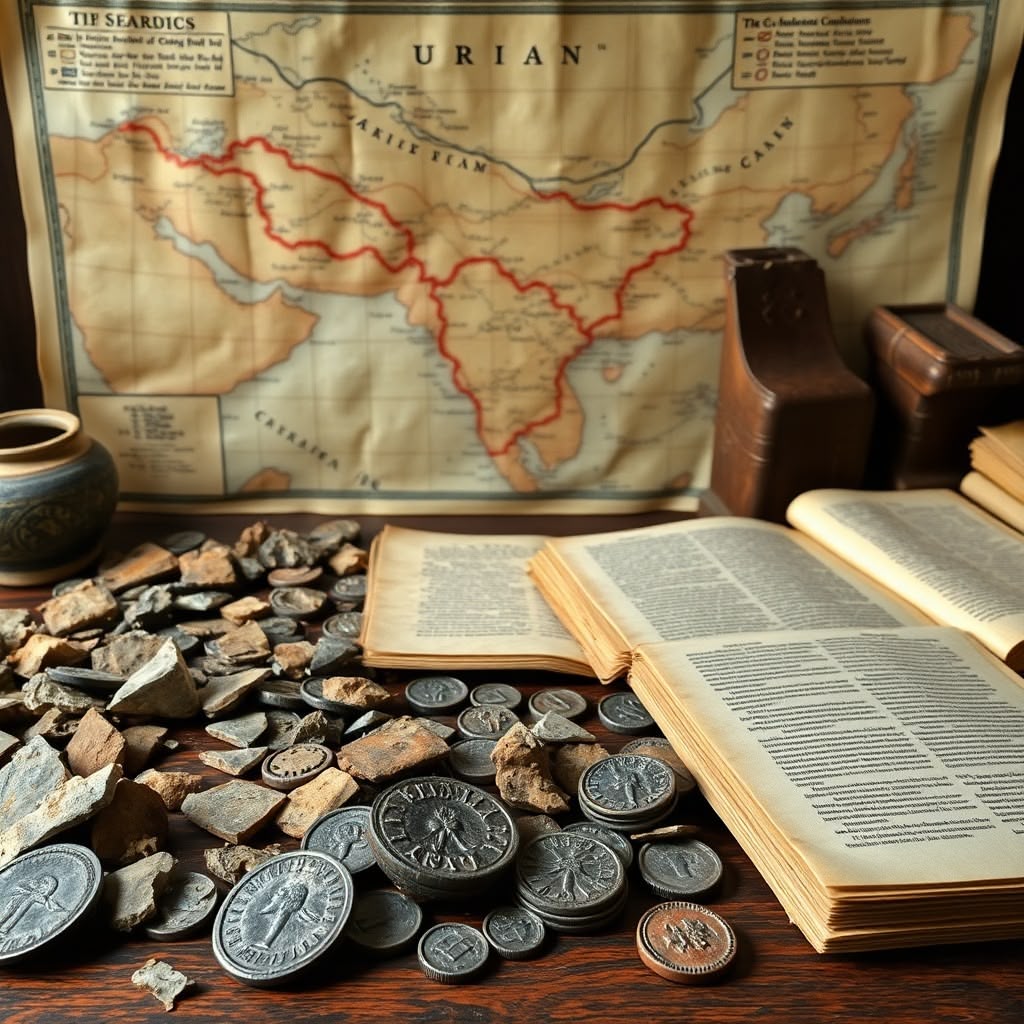
Unexpected Discoveries: When AI Challenges Historical Consensus
The most fascinating outcomes emerged when the computational model generated hypotheses that contradicted established historical narratives. Consider the question of direct Roman-Chinese knowledge. The conventional wisdom held that while goods certainly traveled between these empires, direct contact was minimal, with most trade occurring through intermediaries.
The AI analysis suggested otherwise. By tracking the distribution patterns of certain highly specific goods – particular types of glassware from Roman Syria that appeared in Chinese tombs, and specific silk weaving techniques that showed up in Roman contexts – the model indicated a higher probability of direct knowledge transfer than previously believed. This wasn’t the random diffusion of goods through middlemen but suggested deliberate exchange.
Another surprising finding concerned the volume of trade. Historical sources like Pliny had lamented the drain of Roman gold eastward, but quantifying this flow had proven impossible. The computational model, by analyzing the distribution and frequency of Roman coins found throughout Asia, suggested that the volume was significantly larger than historians had estimated. More surprisingly, it indicated substantial reciprocal flows of goods westward that had left fewer archaeological traces.
Perhaps most intriguing was the model’s identification of likely “missing” archaeological sites – places where the network analysis predicted significant trade activity but where little archaeological investigation had occurred. When researchers examined these locations, they frequently found evidence consistent with the model’s predictions.
Rome and the East: A New History Emerges
As the computational reconstruction of Rome’s eastern trade networks matured, a fundamentally new historical narrative began taking shape. Rather than seeing Roman-Eastern trade as primarily a luxury phenomenon – silk for the elite, pepper for the wealthy – the model revealed a more complex economic reality.
The scale and regularity of exchange suggested that eastern goods penetrated much deeper into Roman society than previously thought. Likewise, Roman products reached further into Asia, influencing local economies and tastes. The computational analysis of price data from papyri and inscriptions indicated that certain eastern goods became increasingly affordable over time, suggesting economies of scale in what was truly an ancient global market.
The political implications proved equally significant. The model highlighted how Rome’s eastern trade created dependencies and influences that shaped imperial policy. Maintaining access to eastern luxury goods wasn’t merely about satisfying elite consumers – it became an economic necessity as industries and tax revenues grew around these trade networks.
Cultural exchange followed economic connections. The model tracked not just the movement of goods but the probable diffusion of ideas, artistic styles, and technologies. When researchers examined Roman art from periods of peak eastern trade, they found increasing incorporation of eastern motifs – not as exotic curiosities but as integrated elements of Roman aesthetic sensibility.
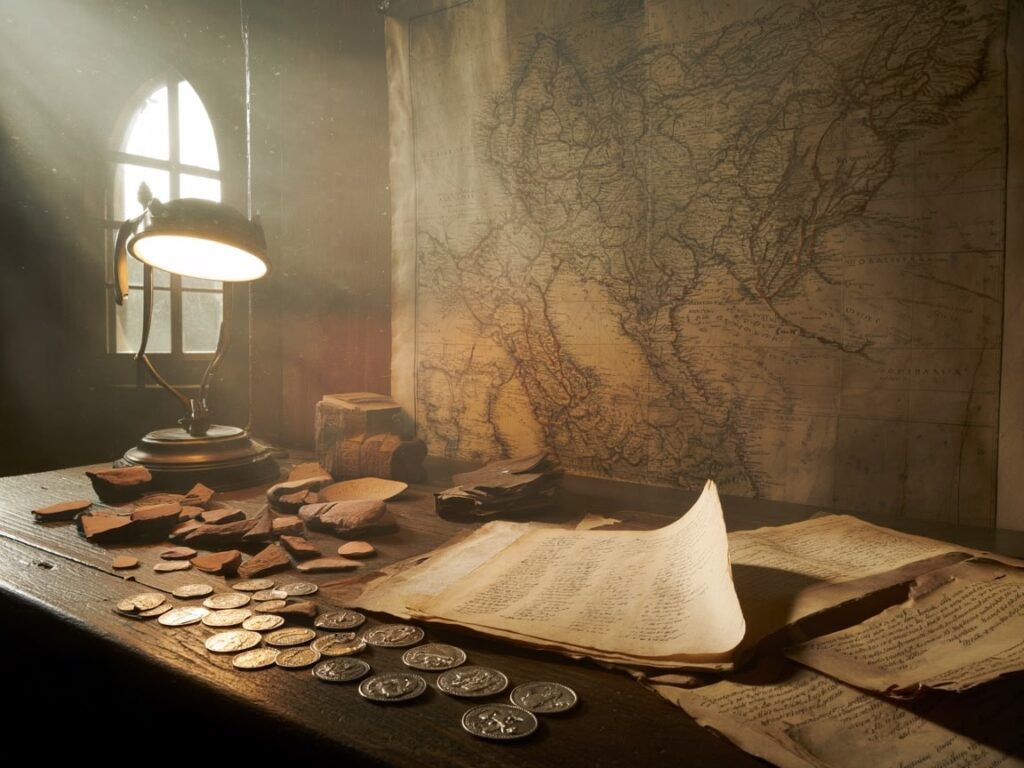
The Digital Humanities Revolution: Implications Beyond Rome
The reconstruction of Rome’s Silk Road connections represents more than an interesting historical case study – it demonstrates how computational approaches are transforming our understanding of the ancient world. This methodological revolution extends far beyond Roman trade, offering new possibilities for examining any complex historical system where traditional evidence is fragmentary.
What makes the computational approach so powerful is its ability to work with uncertainty. Traditional historical methods often reach their limits when evidence becomes too sparse or contradictory. Computational models thrive in exactly these conditions, identifying the most probable scenarios given limited data and generating testable hypotheses for further investigation.
This doesn’t replace traditional historical scholarship – it enhances it. The most productive research emerges when computational insights are combined with deep historical expertise. The AI might identify a probable trade connection, but historians provide the cultural context that explains why that connection mattered.
For students of history, this computational turn offers exciting new career pathways at the intersection of humanities and data science. The historian of tomorrow needs not only to read ancient languages but to understand how algorithms process information and recognize patterns.
Beyond Rome: The Future of AI in Historical Research
The success of the Roman Silk Road reconstruction has inspired similar projects examining other historical networks. From mapping the spread of religious ideas in medieval Europe to tracing the diffusion of agricultural techniques across ancient Mesoamerica, computational approaches are illuminating historical questions that once seemed impenetrable.
These methods continue evolving rapidly. The next generation of historical AI models incorporates even more sophisticated approaches: agent-based modeling that simulates the decisions of thousands of individual historical actors, computer vision systems that can analyze thousands of artifacts for subtle patterns invisible to human eyes, and natural language processing that can extract meaning from ancient texts in new ways.
Perhaps most exciting is how these approaches democratize historical research. Computational models can be shared globally, allowing scholars without access to major museums or archives to contribute to historical discoveries. A researcher in Malaysia might identify a pattern in the model that suggests examining local archaeological evidence in a new light, contributing to our understanding of Roman trade from a perspective that might otherwise be overlooked.
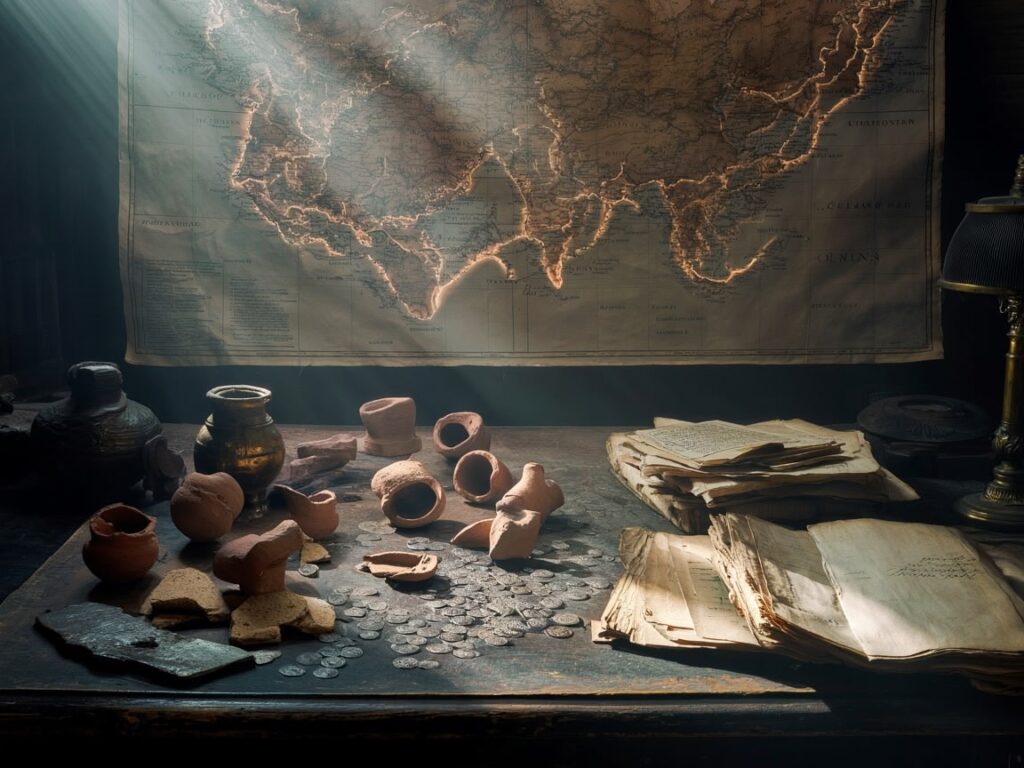
Rewriting the Ancient World: What Rome’s Eastern Connections Tell Us About Globalization
The reconstruction of Rome’s Silk Road networks challenges us to reconsider our understanding of globalization. We often think of our interconnected world as uniquely modern, but the computational model reveals an ancient world far more integrated than we previously imagined. Goods, ideas, and people moved across vast distances, creating economic and cultural connections that transcended political boundaries.
This historical perspective offers valuable insights for our contemporary moment. The resilience of ancient trade networks – their ability to adapt to political disruptions, environmental challenges, and technological changes – provides lessons for managing our own global systems. The computational models demonstrate how alternative routes emerged when primary channels were blocked, suggesting strategies for building redundancy into modern networks.
Perhaps most profoundly, this research reminds us that civilizations have never existed in isolation. The Rome that lives in our imagination – with its legions, coliseums, and emperors – was simultaneously shaped by influences from distant lands. The silk in a senator’s toga, the pepper in his food, and perhaps even some of the ideas in his philosophy arrived via these complex eastern connections.
Conclusion: The New Frontiers of Historical Knowledge
The computational reconstruction of Rome’s Silk Road connections represents more than an interesting academic exercise – it fundamentally changes how we understand one of history’s most influential civilizations. By revealing the extent and impact of Rome’s eastern trade networks, this research places the empire in its proper global context.
For historians, the implications are profound. Questions that seemed permanently beyond our grasp due to limited evidence now become accessible through computational approaches. The fundamental nature of historical research is evolving from a primarily qualitative discipline to one that integrates quantitative methods and embraces probability rather than certainty.
For the broader public, this research offers a more accurate and nuanced view of the ancient world – one where civilizations didn’t develop in isolation but through constant interaction across vast distances. The Rome that emerges from this computational reconstruction isn’t diminished by acknowledging these eastern connections; it’s enriched by understanding its place in a complex global network.
As we continue developing these computational approaches to history, we’re not just using new tools to answer old questions – we’re asking entirely new questions that were previously unimaginable. The digital reconstruction of Rome’s Silk Road connections isn’t the end of a research project; it’s the beginning of a new way of understanding our shared human past.

